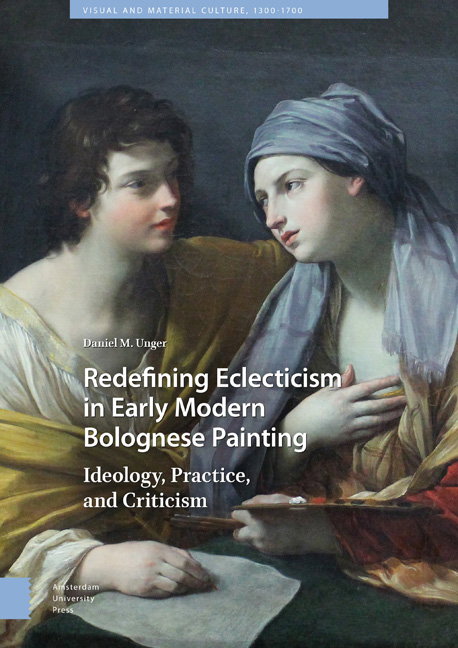Conclusion: The Eclectic Approach
Published online by Cambridge University Press: 21 November 2020
Summary
As this book has argued, the term ‘eclecticism’ has important implications for the understanding of seventeenth-century painting and of the Bolognese reform of painting. The idea represented by this term was articulated in the seventeenth century, and is discernible in artistic treatises written during this period. In the work of Bolognese painters such as Ludovico, Annibale, Reni, and Guercino, one can recognize a type of eclecticism that was ideologically supported by the religious doctrine of Paleotti, and was acknowledged by Malvasia. What characterized Bolognese eclecticism was the use of more than a single style in a given work of art. This form of non-assimilated eclecticism was developed by the Bolognese painters in an attempt to resolve Paleotti's ideological distinction between representations of the celestial and the terrestrial realms, between vice and virtue, and between visually familiar and unfamiliar saints. These Bolognese painters understood the iconographic possibilities made available by this method. Over the course of his artistic career, each of the painters discussed in this book developed multiple styles that were uniquely his own, regardless of his inclination toward classicism or naturalism, a linear style or a painterly one. Especially notable in the work of Ludovico, this type of eclecticism should be regarded as an important contribution of the Bolognese school of painting.
This perception of eclecticism as a practical methodological tool or iconographical device, and the detection of different styles in a single painting or set of decorations, may direct us to additional layers of meaning in the art of the early seventeenth century. This is evident in the paintings discussed in Chapter Three, as well as in the work of other Bolognese painters who are not included in the present study. As the previous chapters have demonstrated, the type of non-assimilated eclecticism that is discernible in these paintings was deliberate and was meant to accentuate the meaning of each scene.
This understanding of eclecticism, however, did not persist over time. In the course of the nineteenth century, the term coined by Winckelmann in 1763 came to represent a mechanical process of imitating the works of numerous painters in a single composition, and thus as mediocre art.
- Type
- Chapter
- Information
- Redefining Eclecticism in Early Modern Bolognese PaintingIdeology, Practice, and Criticism, pp. 207 - 208Publisher: Amsterdam University PressPrint publication year: 2019

